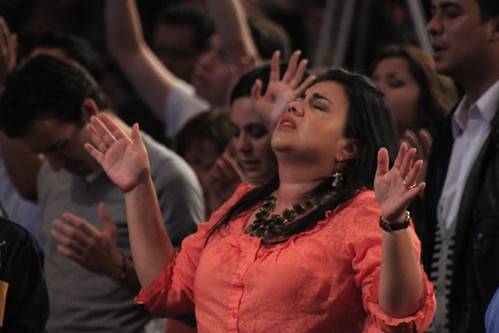 |
| Photo Credit: Ministerios Cash Luna |
Because of the type of ministry that I'm involved with in reaching out to ethnic minority college students, I often find myself in discussions about why churches aren't more diverse and what can be done to change those realities.
Writer Christena Cleveland has offered a helpful summary of a recently published article in the Annual Review of Sociology from sociologists Korie Edwards, Brad Christerson and Michael Emerson entitled "Race, Religious Organizations, and Integration."
In her summary, Christena describes the authors' findings of the factors that exist for churches that are most likely to be diverse:
Which types of churches are most likely to be diverse?
Internal factors:
- Statistically, the most important predictor of racial diversity is religious tradition. Non-Christian churches (27%) and Catholic churches (15%) are far more diverse than Protestant churches (5%).
- The second most important predictor – at least for Christian denominations – is the historical position on race relations. Christian denominations with a long history of fighting for racial justice are more likely to have diverse congregations today. The best example of this is the Catholic Church, which has a long history of racial justice as well as a centralized government that organizes and communicates a unified stance on issues of race.
- The third most important factor is whether congregations have leaders who intentionally and routinely promote diversity. These congregations utilize several strategies to promote diversity:
1. Diversify pastoral and lay leadership and empower these leaders to lead in ways that are true to their cultural tradition. (This is the most important strategy.)
2. Create a small group culture within the congregation (including some racially homogeneous ones).
3. Integrate diverse music genres in the worship service.
4. Create and carry out special programs that specifically address racial and ethnic issues.
5. Encourage different racial groups to share their unique experiences, cultural elements and perspectives with the whole church.
6. Diversify the “upfront” leadership – those who are on stage during the worship service or lead in other conspicuous ways.
- Other important predictors of diversity are:
1. Congregations with a charismatic/Pentecostal worship style are more likely to be diverse — presumably because it creates an inclusive and participatory environment.
2. Size – larger congregations tend to be more diverse.
3. Economic status – churches with higher income and well-educated congregants are more likely to be diverse.
External factors:
Ultimately, ethnically diverse congregations can only happen when Christians who are empowered by the Holy Spirit carry with them a loving, humble and sacrificial spirit that puts others before themselves. This kind of willingness to learn from others and step out of our comfort zone helps to create an environment in which a healthy, diverse community can thrive.
- Congregations in urban areas are more likely to be diverse
- Congregations situated in diverse neighborhoods are more likely to be diverse
- Congregations that draw from a large geographic area are more likely to be diverse
To read more of Christena's summary please click here.
No comments:
Post a Comment